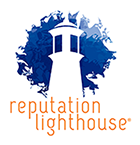- May 9, 2017
- Posted by: Reputation Lighthouse
- Categories: Communication, Crises Management, Reputation

When your competitor is experiencing a crisis, what should you do?
Certainly, there is the opportunity to laugh your way to the bank, after all their mistake is your gain – right?
The more prudent approach, though, is to study carefully the circumstances of the crisis and ask, how easily could this happen to us?
When your competitors are in crisis, your industry is at risk and you have reputational exposure if only guilt by association. Crises erupt for large companies almost daily — everything from overbooked airlines to financial fraud and natural gas explosions, as well as faulty batteries, automobile recalls, and cybersecurity attacks to name just a few.
However, it doesn’t matter whether you are a large conglomerate or a small company in a less publicized marketplace. Any crisis your competition is experiencing is yours to address as well.
If your industry already suffers low levels of trust, then your reputation can ill afford to take any further hits. That is when customers begin to find alternatives to your products and services, or when regulators get involved. Large companies can often weather new regulations or significant loss of market share, but smaller companies may find themselves either out of business or ripe for takeover.
When there is a crisis in your industry, instead of watching the flames from afar, assemble your leadership team and get to work solidifying your own reputation with these eight steps:
- Assess Situational Risk – Maybe you’ve had similar instances that your company managed without large-scale exposure. How did you handle it? Were the situations resolved appropriately, did you change policy and processes, or did you just sweep it under the rug, and hope it didn’t happen again? Are you now at risk of having your dirty laundry exposed while the industry is under a microscope? This is not the time to glaze over reality. Ask the tough questions, understand scenarios, and make sure you are talking to the right people, particularly front-line employees. Never assume managers are fully aware of their staff’s experiences and make sure people feel safe to share.
- Adjust Policies and Procedures – If you have not been through a similar crisis, how can you keep it from happening to you? Is it a policy issue, or outdated process? Are procedures too complicated to follow leading to missed steps? Do you need to replace equipment or better train employees? Is there a supplier issue, or are your schedules too rushed for proper quality assurance? Are you listening to your customers? Are you listening to your employees? Have circumstances changed since you implemented those processes? Has social media created a new challenge? Are employees prepared?
- Communication with Transparency – Your stakeholders need to know you are concerned about the situation, and what you are doing to address it within your own company. Take this opportunity to build relationships and trust with your stakeholders by showcasing your care and protection of them. Be sure you are reaching all your stakeholder groups with consistency and aligned messages. And make sure your employees are the first stakeholders on your list.
- Train for Success – Employees need to understand specifically how these issues and any implemented changes impact them. Train for the situation but also train with your brand’s vision in mind. If you are a customer-centric brand, then elevate your customer care training. If you are in food processing or construction, you may need to re-address safety standards. If you’ve been through a merger or acquisition, is everyone to the same standards and are the standards high enough for the new venture? Are you at risk for cybersecurity attacks that require new training for employees to protect data exposed by multiple access points? In each case, training should be a form of brand buy-in, where everyone is on the same page and agrees this is how you will work together to move your company forward.
- Conduct Overarching Reputational Risks Assessment – Though you immediately reviewed your situational risks, you need to also evaluate your overarching reputational risks. What are other areas where you risk relationships with your stakeholders? How high are those risks? How damaging would those risks be? Then, what kind of gambler are you? Since the industry is under scrutiny, you are already highly vulnerable. And it is often worse to be the second crisis exposed within an industry because customers are less forgiving of second offenders who didn’t learn from a competitor’s mistakes.
- Monitor Your Reputation – You should always monitor your reputation but during this time, it is essential. What are influencers saying? How is the situation impacting your reputation with your customers, with the community, with investors, with government/regulators? Is it impacting your current workforce or your future one? How is it impacting your company online – are conversations about your competitor overshadowing or spilling over to your brand?
- Showcase Your Difference – Remember, reputation is the ultimate differentiator. This is not the time to be a “best-kept secret.” If you are doing things right, if you look at things differently than your competitor, if you have invested time and resources to safeguard against such lapses, you are in a good place and should utilize this opportunity for your brand to shine. You can also showcase that you are learning from mistakes in the industry and are doing things differently from here on out. This is often where challenger brands or even smaller market players can make advances because of their nimbleness and ability for entrepreneurial transformation.
- Create a Reputation Platform – This is an ideal time to look at your reputation for the future. For what do you want to be known? What characteristics do you want stakeholders to trust and hold dear? What does the marketplace say about you? Where can you build equity? A reputation platform is a leadership plan that expands across the entire company and moves beyond assessing reputational risks. A reputation platform is a roadmap for developing corporate reputation across all seven reputational dimensions — products and services, citizenship, innovation, workplace, governance, leadership, and performance. Through a reputation platform, you will drive toward a brand vision that equals the reputation you want to have. In doing so, your company will develop a living brand that builds equity every day.
